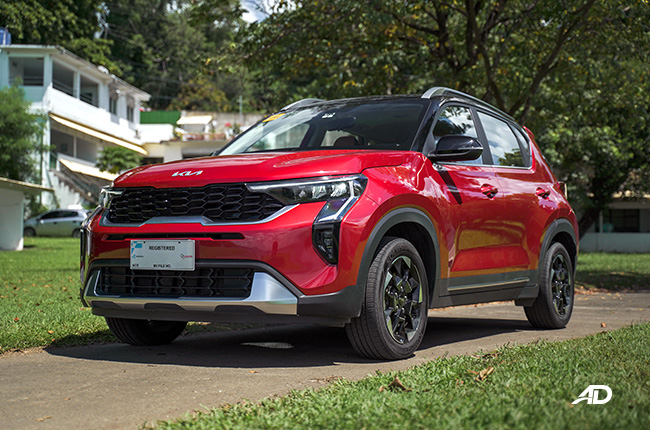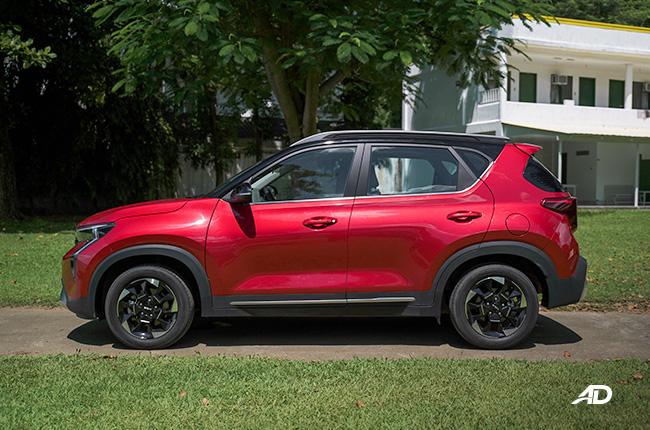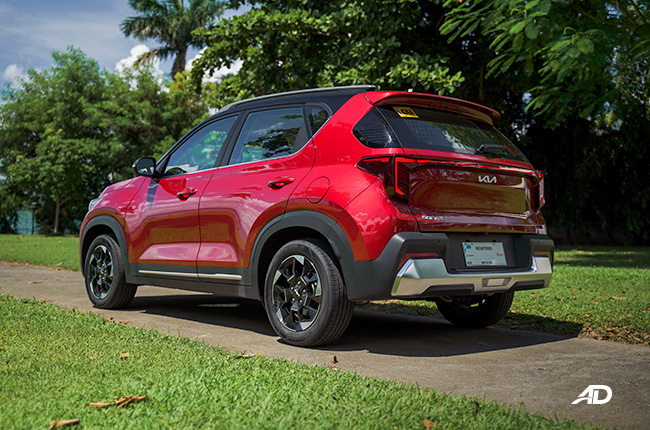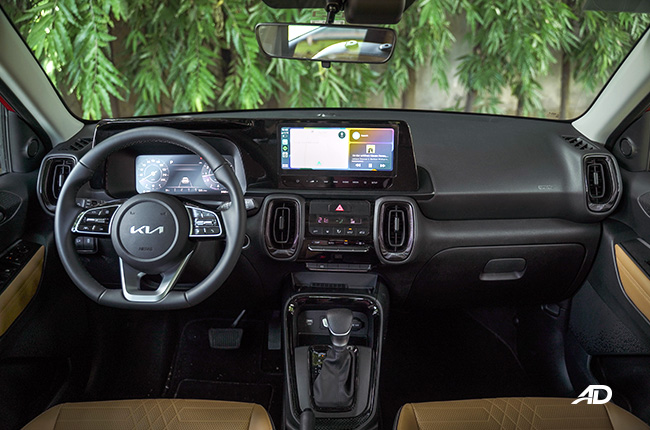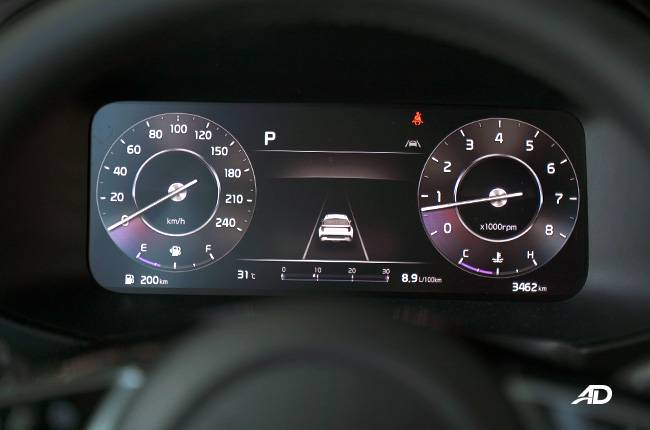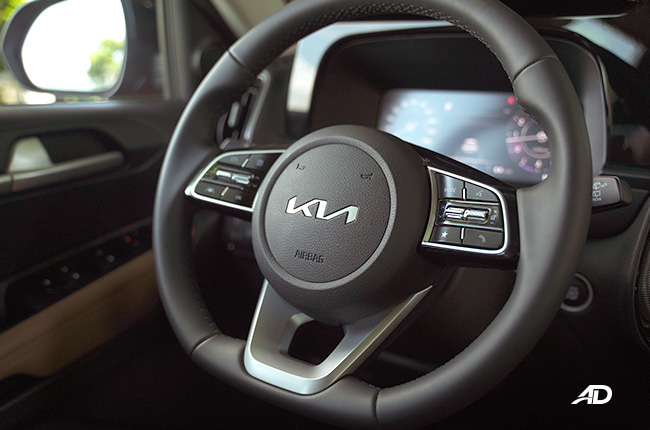
The subcompact crossover is a segment that has been dominated for a while now by the Toyota Raize and to be even within a shout of contending with the Raize means making a lot of noise. Kia, however, is thinking differently. Their approach in dethroning the Raize is subtlety. Their competitor doesn’t have to be brash and loud to make a statement, it just needs to be elegant, graceful, and most importantly, good.
Enter, the Sonet, Kia’s entry into the subcompact crossover segment. Is Kia’s take on the subcompact crossover enough to make a dent in the Raize’s armor? The specs are promising, but as for the rest? We find out in this review.
Engine Output (HP), Acceleration, Transmission, Handling 4.0/5
Exterior & Interior Design, Quality, Fit and Finish, Ergonomics 4.0/5
Cabin Comfort, Suspension, NVH Insulation 4.0/5
Convenience Technologies, Active and Passive Safety Features 4.5/5
Amount of the vehicle you get for the price, Fuel Efficiency 4.5/5
- Powertrain is smooth and fuel efficient
- Exterior design is unique and refreshing
- Lots of ADAS features for its price point
- Steering wheel does not have telescopic feature
- Trunk floor is not flat
Price
Before we get to anything else, let’s talk about the Sonet’s price. This top-of-the-line SX variant is priced at P1,158,000. Compared to the Raize’s P1,063,000, you’ll need to shell out an extra P95,000 if you’re opting for the Sonet.
It’s the same story if you’re shopping around for base variants. The Sonet LX MT is priced at P758,000 while the Raize E MT is priced at P751,000. If we’re only talking about affordability, the Raize would win hands down, but, price tags never tell the whole story and are not a good indicator of value for money, an aspect that we will come back to later on.
Engine

Powering the Sonet is a 1.5-liter naturally aspirated gasoline engine that produces 113 hp and 144 Nm of torque. Power is sent to the front wheels via either a six-speed manual transmission or an Intelligent Variable Transmission (IVT) in the case of this SX variant. The suspension system features MacPherson struts in the front and a coupled torsion beam axle at the rear. Braking is handled by four-wheel disc brakes, which come standard across all Sonet variants.
If you’re familiar with these specs, that’s because the Sonet’s powertrain is the same as the Hyundai Creta and the seven-seater Stargazer MPV. Now, we’ve tested both the Creta and the Stargazer and have been largely satisfied with the engine’s performance in those vehicles. Fitting the same engine in a much smaller, and lighter crossover will make a world of difference. Just like we’ve said before with the Creta, if this powertrain can power an MPV with seven passengers, it’s good enough for a five-seater crossover.
Fuel Economy
On the topic of fuel economy, the Sonet manages to get 9.5 to 10 km/l in the city. On the highway, you can push it up to 20 km/l if you temper your foot and just cruise. While the Sonet isn’t as fuel-efficient as the similarly priced Raize 1.0 Turbo CVT, which achieves 10 km/l in the city and 22 km/l on the highway, the difference is minimal given that the Sonet’s naturally aspirated engine offers higher power and torque.
Exterior
The exterior of the Sonet boasts a modern design, featuring LED lights and a sleek grille. Its dimensions are optimized for easy parking and maneuvering in urban settings, while still offering ample interior space. Additionally, the car is available in a variety of colors, including eye-catching two-tone options in this SX that let it stand out even more. If you don’t like the two-tone look, Kia offers the Sonet SX with the option to get it in one solid color.
Exterior highlights include alloy wheels with a geometric style and bold lighting elements, with LED headlights and taillights. While we’re not thrilled about the design of the alloy wheels, Sonet is still a pretty stylish car when you take it all in. Furthermore, the cuts and creases on the front and rear give the illusion that the Sonet is wider and taller than it really is.
We totally dig the Sonet’s look as it’s a welcome departure from the more rounded and tame look of the Stonic crossover the Sonet replaced. At the sides, the Sonet has repeaters on the sides, roof rails up on top, and an impressive 205 mm of ground clearance, pretty helpful when you’re navigating the metro.
Trunk Space

Open the trunk, and you'll find a generous 385 liters of practical space. Pros include a low loading bay that easily accommodates a balikbayan box and overnight luggage. If you require additional room, folding the rear seats down provides space for two more boxes and extra bags. However, there are some drawbacks: the loading lip is relatively high, which results in a lower floor, and when the rear seats are folded down, they do not lay flat, making it somewhat challenging to load heavier items.
Interior
Moving inside we start at the second row of the Sonet. The seats in the SX variant are upholstered in leather, and while they aren’t the best leather in the market, it’s definitely acceptable for an entry-level crossover like the Sonet. The bench seats can accommodate three passengers in a pinch but if comfort is a priority, two passengers are recommended as they will be fighting for elbow room.
The usual amenities are there, bottle holders on each door and an armrest with two cupholders. What stands out in the second row is the inclusion of air vents and two USB Type-C chargers at the center box. Leg space and headroom are adequate so taller passengers can fit in the second row.

Moving up front, the first thing we noticed is that finding the right driving position in the Sonet could take time because while the steering wheel is able to tilt, it isn’t telescopic, meaning you’re relegated to adjusting the distance using your seat only.
As for the rest of the front, the Sonet’s interior design is quite intuitive and well laid out. Controls for vehicle functions can be adjusted using physical buttons on either side of the steering wheel while HVAC controls are placed in the center below the infotainment screen. A wireless charger and cubby holes can be found further down the center stack as well.
As for the things we don’t like, the main pain point in the interior for us is the housing for the instrument cluster and infotainment screen which is essentially a large piece of piano black plastic. The design is lifted from the Stargazer MPV and while it looks good on a vehicle like the Stargazer, we feel like it could’ve been adjusted slightly to be smaller in the Sonet. Everywhere else though the Sonet feels solid. Build quality is very impressive and feels a step above other crossovers in the market. Plus, we absolutely adore having a sunroof on a tiny crossover like the Sonet so that’s a big thumbs up from us.
Technology and Safety

As the top of the top-of-the-line variant, the SX trim elevates the experience with single-zone automatic climate control, a large 10-inch touchscreen display, a 10.25-inch TFT instrument cluster, and advanced driver assistance systems. These driver aids include Lane Keeping Assist (LKA), Lane Following Assist (LFA), Forward Collision-Avoidance Assist (FCA), Downhill Brake Control (DBC), High Beam Assist (HBA), and Driver Attention Warning (DAW). Considering that these amenities are sometimes only found in much more expensive vehicles, we give props to the Sonet for providing a ton of value for your money in the tech and safety side of things.
Driving Performance

As the Sonet competes directly with the Raize, we have to use the range-topping Raize as a baseline for the Sonet SX. Going back to the engine, the Sonet utilizes a 1.5-liter four-cylinder gasoline engine that puts out 113 hp and 144 Nm of torque. In comparison, the top-of-the-line Raize is powered by a 1.0-liter turbocharged three-cylinder mill that puts out 96 hp and 140 Nm of torque.
Thanks to the addition of another cylinder, the Sonet’s powertrain is considerably more balanced than the Raize’s turbo three-cylinder. This means the 1.5-liter is smoother with fewer vibrations entering the cabin when you put your foot down. Plus, even without a turbocharger, the Sonet has 17 more horsepower and more torque than the Raize. Power delivery is linear as it is naturally aspirated and the CVT is equally responsive with the sport mode providing some extra fun and control when you need it.

On the road, the Sonet’s suspension is compliant, adequately smoothening out bumps and imperfections on the road. Compared to other entry-level vehicles on the market, the Sonet’s build quality we lauded earlier also manifests in the sharpness and tightness of the steering wheel. Overall, driving the Sonet is a rather pleasant experience, it looks well-built and feels put together as you go along on the road.
One drawback of the Sonet we have to go back to is the absence of a telescopic steering function. If you prioritize an ideal driving position, you may need to sacrifice a bit on comfort, as the upright seating and limited adjustment options can lead to an awkward position. Other than that though, we were pretty happy with our time driving the Sonet.
Verdict

The Kia Sonet is an easy car to drive, it’s feature-packed in its range-topping form, and it’s quite practical while also being a looker on the road. When you consider everything the Sonet has in terms of amenities and build quality, you can forgive the slightly high price tag of the SX. So add to being an easy car to drive, it's also an easy car to recommend to anyone.
If you're focused on Japanese and Korean brands for your subcompact crossover, the Kia Sonet offers an unbeatable value proposition, even with its P1,158,000 price tag. Sure, it may have its little foibles and quirks, but overall, the Kia Sonet presents a very compelling case for itself.
Check out the Kia Sonet on AutoDeal.com.ph and view its specs and prices. Find great deals and connect with sales agents in mere moments by clicking the ‘Get Quote’ button. Find the best car for the best price on AutoDeal faster than you can read a fourteen-line sonnet.
Specifications
Engine
1.5 LFuel Type
GasolinePerformance
113 hp @ 6,300 rpmTransmission
Automatic-
Summary
-
Name Kia Sonet 1.5 SX AT Two-Tone Body Type Crossover Price ₱1,178,000 Transmission Category Automatic -
Engine
-
Engine Size 1.5 L Displacement 1,497 cc Number of Cylinders 4 Number of Valves 16 Transmission Type Intelligent Variable Transmission -
Performance
-
Drivetrain Front-Wheel Drive Max Output (hp) 113 hp @ 6,300 rpm Max Torque (nm) 144 Nm @ 4,500 rpm -
Economy & Environment
-
Fuel Type Gasoline Emissions Standard Euro 4 Fuel Capacity 45.0 L *Combined Fuel Consumption 15 km/L *Autodeal Review
-
Dimensions
-
Length 4,110 mm Width 1,790 mm Height 1,642 mm Wheelbase 2,500 mm Turning Circle 11 m Ground Clearance 205 mm Trunk Capacity 385 L Number of Doors 5 Number of Seats 5 -
Safety & Security
-
Driver's Airbag 1 Front Passenger's Airbag 1 Side Airbag Curtain Airbag Knee Airbag Auto Brake System Electronic Brake Distribution Anti-lock Brake System (ABS) Immobilizer Security Alarm Stability Control Electronic Door Locks Speed Sensing Door Locks ISOFIX Lane Departure Warning System Blind-Spot Detection System -
Features
-
Cruise Control Front Parking Sensors Rear Parking Sensors Leather Upholstery Push Start Button Wheel Size 16 in Wheels Metal Type Alloy Airconditioning System Single Zone Automatic Entertainment System 10.25” Full Touchscreen Display, Radio with USB Port Connectivity Bluetooth Handsfree with Voice Recognition, Wireless Apple Carplay and Android Auto Navigation Ready Warranty 5 Years (160,000 km) Keyless Entry Roof Rack Sunroof Electric Adjustable Seats Power Steering Power Windows Power Outlet Steering Wheel Audio Control -
Technology
-
Active Park Assist Hill Start Assist AWD Modes n/a Tire Pressure Monitoring Heads-up Display Power Liftgate Start-stop System
Latest Review
-
Addictively excessive: The Ford Ranger Raptor Twin Turbo V6 / Review
The Ford Ranger Raptor Twin Turbo V6 is one crazy pickup truck. Wondering why? Just keep reading.
4.6 / 5 -
The Kia Carnival gives you more: More seats, more comfort, and more practicality / Review
The Kia Carnival is a three-row MPV designed for executives and families. It combines comfort, technology, and practicality, making it a strong choice for those looking for a premium people...
4.2 / 5 -
The Jetour Ice Cream: A pint-sized EV that’s hard to ignore / Review
The Jetour Ice Cream is an adorable, pint-sized electric car that’s made for the city. Affordable and stylish, it’s easy to love, but does it tick all the boxes for you?
3.7 / 5
Popular Articles
-
Cheapest cars under P700,000 in the Philippines
Jerome Tresvalles · Sep 02, 2024
-
First car or next car, the Ford EcoSport is a tough package to beat
Jun 18, 2021
-
Car Maintenance checklist and guide – here’s everything you need to know
Earl Lee · Jan 12, 2021
-
Most fuel efficient family cars in the Philippines
Bryan Aaron Rivera · Nov 27, 2020
-
2021 Geely Okavango — Everything you need to know
Joey Deriquito · Nov 19, 2020
-
Family cars in the Philippines with the biggest trunks
Sep 20, 2023
-
Head to head: Toyota Rush vs. Suzuki XL7
Joey Deriquito · Oct 28, 2020
-
Why oil changes are important for your car
Earl Lee · Nov 10, 2020
-
2021 Kia Stonic — What you need to know about it
Joey Deriquito · Oct 16, 2020
-
Top 7 tips for buying a used car in the Philippines
Joey Deriquito · Nov 26, 2020


